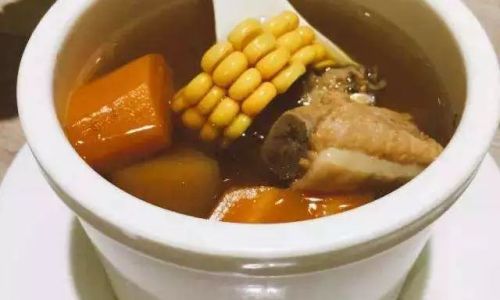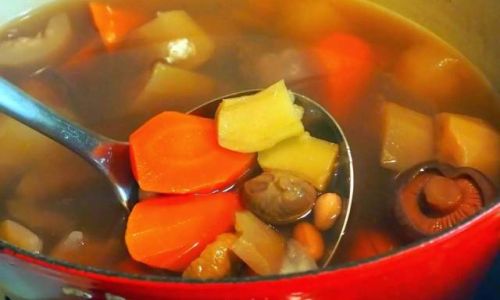Table of content
Soup-making is an age-old culinary practice that transcends cultures, climates, and occasions. From hearty stews in chilly winters to refreshing chilled soups in summer, the versatility of soup lies not just in its ability to nourish but also in its capacity to delight the senses. At the heart of every memorable soup lies a carefully curated selection of ingredients—each playing a unique role in building depth, balance, and complexity. This article explores the science and art behind choosing and combining materials to create broths that are both comforting and exquisite.
The Foundation: Understanding the Role of Ingredients
A great soup begins with understanding how ingredients interact. Proteins, vegetables, aromatics, herbs, and spices each contribute distinct flavors, textures, and nutritional profiles. The key to a harmonious broth lies in balancing these elements. For instance, collagen-rich bones (like beef or chicken) add richness and body, while vegetables such as carrots, celery, and onions impart sweetness and earthiness. Aromatics like garlic and ginger introduce pungency, while herbs like thyme or parsley add freshness.

Proteins: The Backbone of Flavor
Proteins serve as the primary flavor carriers in soup. Bone-in cuts, such as chicken thighs or beef shanks, release gelatin during slow cooking, creating a velvety texture. Fish bones, on the other hand, yield a delicate, briny broth ideal for seafood-based soups. For vegetarian or vegan alternatives, legumes (like lentils or chickpeas) and mushrooms (especially dried varieties such as shiitake) provide umami-rich depth.
Tips for Selecting Proteins:
- Opt for fresh, high-quality meat with visible marbling for richness.
- For poultry, use a combination of bones and meat to balance flavor and texture.
- When using fish, avoid oily varieties to prevent a greasy broth.
Vegetables: Building Sweetness and Complexity
Vegetables contribute vitamins, fiber, and natural sugars that round out a soup’s profile. Onions, carrots, and celery—often referred to as the “holy trinity” in cooking—form the base of many broths. Their slow caramelization during sautéing develops Maillard reaction compounds, adding layers of savory and sweet notes.
Key Vegetables and Their Roles:
- Root Vegetables (Potatoes, Parsnips): Add starchiness and heartiness.
- Alliums (Onions, Leeks, Garlic): Provide aromatic punch.
- Leafy Greens (Spinach, Kale): Offer freshness and color when added at the end.
Pro Tip: Roasting vegetables before adding them to the broth intensifies their natural sweetness.

Aromatics: Elevating the Base
Aromatics like garlic, ginger, and lemongrass are the soul of a soup. They infuse the broth with fragrant oils that awaken the palate. For Asian-inspired soups, ingredients like galangal, kaffir lime leaves, or cilantro roots add exotic flair. In Western cuisines, bay leaves, peppercorns, and juniper berries are common.
Balancing Act:
- Fresh aromatics (e.g., ginger) should be sliced or crushed to release oils.
- Dried spices (e.g., cumin, coriander) benefit from toasting to enhance their flavor.
Herbs and Spices: The Final Touch
Herbs like parsley, dill, or basil are best added toward the end of cooking to preserve their delicate flavors. Spices, such as cumin, paprika, or star anise, require longer cooking to meld with the broth. A pinch of acidity (lemon juice or vinegar) at the finish can brighten the soup and balance richness.
Common Pitfalls to Avoid:
- Overusing herbs, which can make the broth bitter.
- Adding spices too early, leading to a muddled taste.
The Science of Simmering: Techniques for Perfect Broth
The cooking method is as crucial as the ingredients themselves. Simmering, not boiling, is the golden rule for clear, flavorful broths. Aggressive boiling breaks down proteins too quickly, resulting in a cloudy, greasy liquid. Slow, gentle simmering allows flavors to meld while preserving clarity.

Key Steps for Broth-Making:
- Blanch Bones (If Using): Parboiling meat or bones removes impurities, ensuring a cleaner taste.
- Sauté Aromatics: Cooking vegetables and aromatics in fat (butter or oil) before adding liquid deepens flavor.
- Skim Impurities: Regularly remove foam or fat that rises to the surface during simmering.
- Cook in Stages: Add delicate ingredients (like leafy greens) only in the final minutes to prevent overcooking.
Regional Inspirations: Global Soup Traditions
Soup-making varies widely across cultures, each with its own philosophy on ingredients.
- French: Pot-au-feu uses marrow bones and aromaic vegetables for a luxurious broth.
- Japanese: Miso soup relies on fermented soybean paste and dashi (kelp and bonito broth) for umami.
- Mexican: Caldo de Res combines beef, corn, and chili peppers for a spicy, hearty stew.
- Thai: Tom Yum soup balances lemongrass, lime leaves, and chili for a zesty kick.
Adapting these traditions can inspire new flavor combinations. For example, adding miso to a chicken broth introduces depth, while incorporating coconut milk into a tomato-based soup creates a creamy texture.
Health and Nutrition: The Nutritional Power of Soup
Beyond taste, soup is a nutritional powerhouse. Homemade broths retain vitamins and minerals lost in store-bought versions. Bone broths, rich in collagen, are touted for joint and gut health. Vegetable-heavy soups provide fiber and antioxidants, while legume-based soups offer plant-based protein.
Tips for Boosting Nutrition:

- Add bone marrow or fatty fish for omega-3s.
- Include miso or tempeh for probiotics.
- Toss in superfoods like kale or sweet potatoes for vitamins.
Troubleshooting Common Issues
Even seasoned cooks face challenges in soup-making. Here’s how to fix them:
- Bland Broth: Add a splash of soy sauce, fish sauce, or miso for instant umami.
- Greasy Texture: Chill the broth overnight and scrape off congealed fat.
- Overcooked Vegetables: Remove delicate veggies (like zucchini) earlier next time.
- Thin Consistency: Simmer longer to reduce liquid or add a starch (rice, barley).
Creative Freedom: Experimenting with Flavors
The beauty of soup lies in its adaptability. Don’t hesitate to experiment:
- Sweet and Savory: Roast butternut squash with smoked paprika before blending into a soup.
- Spicy and Tangy: Add a dollop of harissa or yogurt to lentil soup.
- Herbaceous: Garnish a clear broth with a mix of fresh cilantro, mint, and basil.
Conclusion: The Journey of a Spoon
A great soup is more than the sum of its parts—it’s a narrative told through ingredients. Each spoonful should carry the essence of careful selection, patience, and creativity. Whether you’re nursing a cold with chicken noodles or impressing guests with a bouillabaisse, the principles remain the same: respect the ingredients, balance the flavors, and let time work its magic.
As you embark on your soup-making adventures, remember that there’s no single “correct” recipe. Trust your palate, adapt to seasonal produce, and savor the process. After all, the best soups are those made with intention—and a generous dash of love.






0 comments